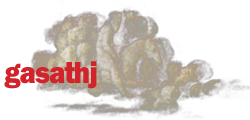As seen from the third-person narration
When asking about the conduction of a narrative in a multimedia performance, the first thing should be to define what this narrative is in itself. A fairly trivial question, one that apparently seems easy to answer. It's just how a fictional or non fictional story is told. “How” defines the method. For the purpose of describing INIRE's activity, a more appropriate term would be “narration”, by putting the narrative as the method in opposition to narration as the process. This opposition can be the first distinctive feature of a performative narrative/narration model. As the process, narration in new media and multimedia, it should contain several features that distinguish it from the narrative used in traditional representational arts. Let me refer to the Marie – Laure Ryan's work Will New Media Produce New Narratives?1, where she indicates five distinctive properties of digital media: interactive nature, multiple semiotic channels, networking capabilities, volatile signs and modularity. Many other leading researchers, i.e. Janet Murray or Lev Manovich2, identify these features in a very similar way. Ryan defines interactive nature as a response to deliberate action, multiple semiotic channels as multimedia, networking capabilities as the ability to connect machines and people across space and bring them together in a virtual environment, volatile signs as signs which can be refreshed and rewritten, and modularity as uploading and sharing once again in other form. Each of these is more or less evident in the frame of INIRE performances. Its form has multiple sensoric channels which combine sounds generated by electronic and electroacoustic instruments (electric double bass, analog synthesizer, samplers and software), non–descriptive live video and singing, speaking or writing on the screen text. Polyphonic narratives of music, words and images, running alongside, complement each other and create a whole. Its networking capabilities rely on live web broadcast of performed projects. Volatile signs can be seen here as an ability to explain and reintrepret myths, archetypes and traditional texts in a deconstructing digital way. Modularity, as every digital work of art is modular. So, I would like to concentrate on the one which may be questionable, because it isn't seen at first glance – interactivity.
1. See A-M.Ryan, Narrative across Media. The Languages of Storytelling, University of Nebraska Press, Lincoln, 2004, p. 338.
2. Ibid.
Writing as a second person narration
Latest INIRE performance re-membering re-called is an audiovisual proceeding about memory and identity, about a sense of identity that is inextricably linked with an ability to hold the world in the mind. The memory in individual and structural sense, the storage and processing of events and language. On one hand, there are digital tools, on the other, the memory of our body. That last one we do not realise. Receiver gets an idea of this context from the key title and verbal content of re-membering re-called. Verbal level explicity tell us about meaning. At this level, the performer turns directly to the recipient. Numerous rhetorical figures as apostrophes and interrogations make the recipient feel like a direct participant, implicitly written in the performance process. Words between the author and the reader are clearly addressed in communicative situation which doesn't contain implied actors or spectators. Just strict, direct contact. Like Monika Fludernik1 calls this second person narrative model, you are the spectator and the protagonist of the story. A story which is homodiegetic fiction, where the narrator shares with the receiver his own experiences and feelings, where they share their active mental spheres. There is an existentional link between the narrator and the narratee, where the story in diegetic way is not important, but what is meaningful is the participation, or rather, an emphasized co-participation. In this narrative sense, we can call this communicative feedback situation as performative and qualify the form of this audiovisual production as a performance.
Singing in first person narration
One of the performance texts cited here clearly shows this narration process. Process of common investigation to meaning and importance of subjective reality, for which there is no distinct definition.
imagine that writing a book is our primary destiny, the decision to
write, but firstly to imagine the objective, real world
in consequence, the perpetually renewing story comes into being
in which there already is everything
everyone is granted the possibility to observe how you make it out to be
comprehensible, curious, sometimes even poignant
it's inevitable that there will be few words beyond doubt
free from doubt or their verisimilitude
regardless, you write it so
that everyone could find a reliable, accurate, and infallible advice
that concerns all situations, whether of grand or of minor consequence
you'd like writing and reading to be the same
for them to renew in spite of the man
you'd want this certainty of persistence to be the leading theme of the plot
to mean permanence - no less, no more
your own permanence
the certainty that you'll always be
without margin, nor inconclusive interpretations
to be free from doubt that its reading could be different
though always written in your own handwriting, and in your mother tongue
for how long must you prove to others that the book is real
to believe in it yourself2
3. See M.Fluderik, Second person fiction. Narrative You as addressee and/or protagonist. In: AAA - Arbeiten aus Anglistik und Amerikanistik, Bd. 18, 1993, p. 217 – 247.
4. http://vimeo.com/inirevideo
